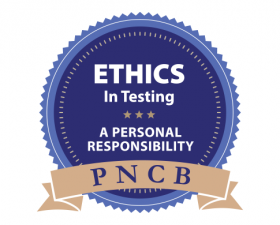CPNP-AC Exam Resources
The Certified Pediatric Nurse Practitioner - Acute Care (CPNP-AC) exam is 3 hours and asks 175 multiple-choice questions based on categories in the content outline, an essential study reference. Create a personal study plan and prepare using the resources below.
The PNCB Board of Directors does not endorse the content of or approve specific training programs, study guides, review courses, or other examination preparation products. Purchase of preparatory materials for PNCB certification examinations are not required and do not guarantee a passing score on the examinations.
The content outline/test blueprint is your #1 tool to start your study. It describes all subject areas covered by the exam and questions per category.
PNCB certification exams are comprehensive tests, so be sure to study all areas of the content outline.
Tip! This exam tests your ability to apply knowledge and use critical thinking skills to determine one best answer among answer choices.
The current content outline is based on our 2023-2024 Job Task Analysis research. This routine, required research ensures that exam content accurately represents current pediatric acute care nurse practitioner practice in the U.S.
Content for the updated exam has not changed considerably, and you do not need to study differently. After the JTA, a passing point determination follows construction of new exam forms and establishes minimum passing scores using standard psychometric methods, such as Item Response Theory and Modified-Angoff scoring. Learn more about the exam form development process.
See full details about the latest 2023-24 study in our executive summary and 2023-24 CPNP-AC Exam PowerPoint.
We recommend you use ONE pediatric textbook that you are familiar with to review for the exam. This text should also focus on the subject areas covered by the exam content outline.
Our acute care exam item writers and committee members have found the most current edition of the following references useful for their review. Additions or deletions to this list are a result of exam committee member input and anonymous faculty surveys.
You do not need to study all the references listed below. PNCB does not endorse nor have any proprietary relationship with any of the following textbooks or their publishing companies.
Textbooks and Related Resources
Fleisher & Ludwig’s Textbook of Pediatric Emergency Medicine
By KN Shaw, RG Bachur, J Chamberlain, J Lavelle, J Nagler, JE Shook
Lexicomp Pediatric & Neonatal Dosage Handbook
By American Pharmacist Association
Nelson Essentials of Pediatrics
By KJ Marcdante, RM Kleigman, AM Schuh
Nelson Textbook of Pediatrics
By RM Kliegman, JW St. Geme III
Park’s Pediatric Cardiology for Practitioners
By MK Park, M Salamat
Pediatric Acute Care: A Guide for Interprofessional Practice
By BN Bolick, K Reuter-Rice, MA Madden, PN Severin
Red Book 2024-2027: Report of the Committee on Infectious Disease
By American Academy of Pediatrics (AAP)
Roger’s Textbook of Pediatric Intensive Care
By DH Shaffner, JJ McCloskey, EA Hunt, RC Tasker (Eds)
The Harriet Lane Handbook: The Johns Hopkins Hospital
By CC Anderson, S Kapoor, TE Mark
Evidence-based Practice / Professional Role
Evidence-Based Practice in Nursing and Healthcare: A Guide to Best Practice
By BM Melnyk, E Fineout-Overholt
Nursing Research: Methods and Critical Appraisal for Evidence-Based Practice
By G LoBiondo-Wood, J Haber
Respected Clinical Practice Guidelines/Statements/Reports
- American Academy of Pediatrics (AAP)
- Centers for Disease Control and Prevention (CDC)
- Society of Critical Care Medicine (SCCM) Clinical Practice Guidelines
- National Heart, Lung, and Blood Institute (NHLBI) Guidelines
- Infectious Disease Society of America (IDSA) Clinical Practice Guidelines
- American Heart Association (AHA)
CPNP-AC Practice Tests offer in-depth rationale for right answers to enhance critical thinking. Score reports can help you focus studies.
The cost is $52 per module. You receive unlimited attempts of 75 questions for 150 days.
Looking for more exposure to CPNP-AC exam topics? PNCB also offers an Acute Care Exam Drill containing 50 multiple-choice questions (answers only, no rationales). The cost is $26.
You are taking a big step in your career and preparing for a Pediatric Nursing Certification Board (PNCB) certification exam. We hope you find the information about Preparing to Take your Board Exam helpful.
What review course should I take? Which books are the best? Do you offer a review course?
The PNCB can't conduct a review course because this would be a conflict of interest. We also can't endorse a specific review course or book, but we do recommend you consider the following when selecting a course or title:
- How are the instructors or authors prepared? Do they have rigorous academic credentials? Do they hold the credential you seek? What about their practice experience?
- Are the topics covered consistent with the exam's content outline?
- Do the books offer practice questions after each chapter?
- Does the course offer testimonials? If so, evaluate the comments offered by your peers.
- Does the review course ask for feedback? Do they post survey results on their website?
- Talk to others who have taken a specific review course. Were they satisfied?
You may also want to check your membership organization website for books that are recommended. We hope this gives you an idea of things to look for as you make your decisions.
Sample Questions for the CPNP-AC Exam
Please note that these are only sample question types you may encounter and do not reflect the scope or degree of difficulty of the exam. The answer key is located at the bottom of the page. For more questions with correct answer rationale, consider PNCB's practice tests for your exam.
Select the one answer that is best in each case.
Sample Questions
1. A toddler presents with bruising over multiple body surfaces including arms, legs, and trunk. Faint petechiae are also noted. Results of the CBC are provided below.
2. A 10 month old who is otherwise healthy has had emesis with intermittent periods of intense crying, and is passing red stool. Which of the following actions should be done FIRST?
3. Which of the following medications has the GREATEST risk for medication-induced pancreatitis?
4. An adolescent presents with agitation, tachycardia, hypertension, hyperthermia, mydriasis, and dry, flushed skin. Ingestion of which of the following medication classes is MOST likely?
5. An acute care pediatric nurse practitioner’s new oncology service role will include lumbar punctures. The legal authority to perform this task is BEST determined by:
Answers and References:
1. Answer: D
References:
- Bolick, B. N., Reuter-Rice, K., Madden, M., & Severin, P. A. (Eds.). (2021). Pediatric acute care: A guide for interprofessional practice (2nd ed.). Elsevier.
- Kliegman, R. M., ST Geme III, J. W., Blum, N. J., Shah, S. S., Tasker, R. C., Wilson, K. M., & Behrman, R. E. (2020). Nelson textbook of pediatrics (21st ed.). Elsevier.
2. Answer: B
References:
- Bolick, B. N., Reuter-Rice, K., Madden, M., & Severin, P. A. (Eds.). (2021). Pediatric acute care: A guide for interprofessional practice (2nd ed.). Elsevier.
- Kliegman, R. M., ST Geme III, J. W., Blum, N. J., Shah, S. S., Tasker, R. C., Wilson, K. M., & Behrman, R. E. (2020). Nelson textbook of pediatrics (21st ed.). Elsevier.
3. Answer: C
References:
- Bolick, B. N., Reuter-Rice, K., Madden, M., & Severin, P. A. (Eds.). (2021). Pediatric acute care: A guide for interprofessional practice (2nd ed.). Elsevier.
- Kliegman, R. M., ST Geme III, J. W., Blum, N. J., Shah, S. S., Tasker, R. C., Wilson, K. M., & Behrman, R. E. (2020). Nelson textbook of pediatrics (21st ed.). Elsevier.
4. Answer: A
References:
- Bolick, B. N., Reuter-Rice, K., Madden, M., & Severin, P. A. (Eds.). (2021). Pediatric acute care: A guide for interprofessional practice (2nd ed.). Elsevier.
- Kliegman, R. M., ST Geme III, J. W., Blum, N. J., Shah, S. S., Tasker, R. C., Wilson, K. M., & Behrman, R. E. (2020). Nelson textbook of pediatrics (21st ed.). Elsevier.
5. Answer: B
References:
- Bolick, B. N., Reuter-Rice, K., Madden, M., & Severin, P. A. (Eds.). (2021). Pediatric acute care: A guide for interprofessional practice (2nd ed.). Elsevier.




